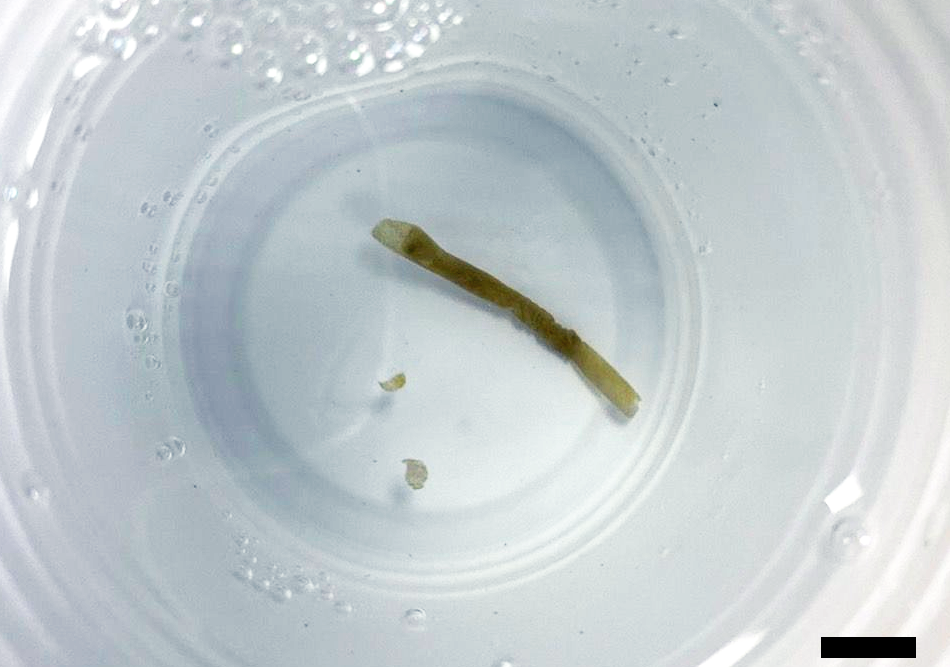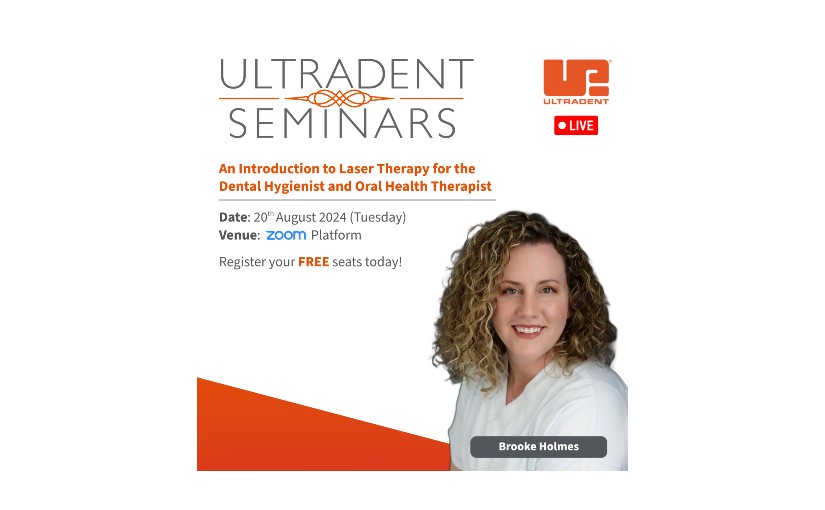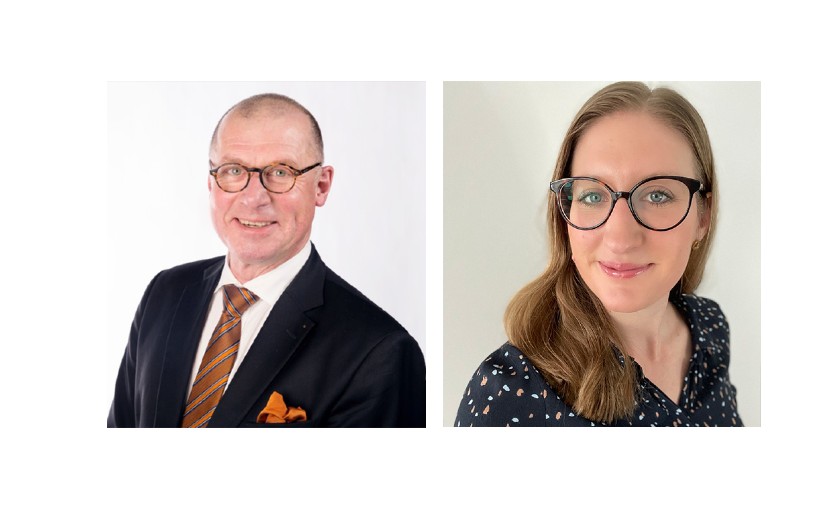The issue of waterline management has come to prominence with dental clinics closing down and then reopening because of various restrictions to practice from the COVID-19 pandemic. Stagnation of water inside the tubing of a dental chair which has been shut down is a major problem because waterborne organisms such as Legionella overgrow readily whenever water sources become stagnant. In addition to Legionella, many other bacteria and protozoa that may be found in reticulated water will also overgrow, forming a thick biofilm which can completely occlude the lumen of the tubing, and prevent the subsequent flow of water.
Closing Down a Dental Chair
This problem of stagnation is the reason why when closing down the dental chair, it is critical to remove water from the waterlines, for example, by displacing it using compressed air, or to render the water that remains incapable of supporting the growth of microorganisms. This can be done using a hibernation solution which contains a long acting antimicrobial agent, designed to prevent the overgrowth of microorganisms for several months. Such a solution needs to be flushed thoroughly from the waterlines when the chair is brought back into its normal operation. Examples of hibernation solutions include products such as Bilpron, which is a mixture of propylene glycol, parabens, biguanides and complexing agents in aqueous solution.
A key consideration for any hibernation solution is a must not cause chemical problems (such as corrosion) by reacting with the components of control blocks, nor must it cause degradation of the waterline tubing. As an example, leaving sodium hypochlorite solutions in the waterlines for an extended period is likely to cause significant corrosion in the control blocks of many types of dental chair that are manufactured in Europe.
Restarting a Dental Chair
The first consideration when restarting a dental chair will be what has grown in the waterlines during the period of inactivity. Prolonged flushing of the waterlines will often reveal surprisingly large deposits of biofilm, held together with a dense matrix of extracellular polymeric substances (EPS), with the appearance of a “slime worm” (Fig. 1). Dislodged portions of biofilm that have accumulated during the period of inactivity can block the fine tubing inside dental handpieces and triplex syringes, and can also occlude the irrigated spray nozzles of dental handpieces.
When bringing a dental chair back into service, it is important to consider the nature of the water which is now being fed into that dental chair. Ideally, this should have as low a level of microorganisms as possible – ideally, the water should be sterile. If this is not possible, and tap water is being used as the source of water, then some chemical treatment of that water will be required to reduce the levels of normal waterborne bacteria and to prevent the growth within the waterlines. Common chemical treatments for tapwater include the addition of an oxidant (such as hydrogen peroxide), the inclusion of a long acting antimicrobial agent such as ionic silver or iodine, or various combinations of these measures.
Generating sterile water “on demand” is possible when the water has been appropriately treated, for example, by using ultrafiltration, or by ozonation. Both approaches have different running costs. For ultrafiltration, the final filter (usually with pore sizes of 0.2 µm or less) requires periodic replacement, and there are normally several (up to 4) pre-filters that also require replacement on a periodic basis. If these filters are not replaced, blockage of the more expensive 0.2 µm filter will occur rapidly. For an ozonation system, the most common approach is to use a platinum electrode for electrolytic decomposition of water, and such electrodes normally last for several years. Ozonation systems that rely on corona discharge require periodic replacement of the corona discharge chamber because of progressive damage from nitrogen compounds that are formed when normal atmospheric air is broken down using high electrical voltages. Using pure oxygen as a source to supply a corona discharge chamber overcomes this issue, and while this particular approach is used industrially for water treatment, it is not often deployed into dental practice. It is much more common for dental clinics to use point-of-care water ozonation systems with platinum electrodes.
Shock Treatment
Electroconvulsive therapy is still used today in contemporary psychiatry for the management of patients with certain severe mental illnesses, to effectively reboot neurotransmitters in the brain. The analogy to shock treatment for a dental chair is surprisingly strong, since a chemical shock treatment of the waterlines of the dental chair is designed to, ideally, reboot the situation back to when the dental chair was brand-new, and the tubing was completely clear of any biofilms.
Agents used for shock treatment are designed to disrupt the EPS matrix of the biofilm, so that the biofilm fragments can be flushed from the waterline, leaving the tubing clean. Chemically, they are somewhat different to agents used to reduce the tenancy of organisms to overgrow during the normal operation of the dental chair, since these may only impair or reduce microbial overgrowth, but may not necessarily damage the structure of the biofilm. In some cases, products that are designed for continuous dosing have special formulations which allow them to be used for shock treatment (e.g. they may be used at a much higher concentration, and left in place for extended periods of time). Most commonly though, for a dental chair, a separate shock treatment agent will be used, which is compatible with the control blocks in the tubing of that dental chair, and this is left in for a prolonged period of time, for example, overnight, for dental chairs such as Belmont, Planmecca, Ritter, or Sirona.
Only a small number of brands of dental chair on the market have control blocks that are compatible with sodium hypochlorite. The indiscriminate use of sodium hypochlorite can easily cause significant corrosion to occur, as this material is extremely reactive to most pure metals as well as to many metal alloys. The general principle is to only use sodium hypochlorite when the manufacturer has explicitly stated that this is their recommended protocol. In other cases, use a purpose-built shock treatment agent (such as Dentisan Bioclear or Bilpron) that has broad compatibility with many brands of dental chairs.
Bioclear contains polyhexamethylene biguanide hydrochloride, also known as polyhexanide, which is a polymer that has a long history of use as a disinfectant and antiseptic extending back to the 1950s. [1] Its key mechanism of action is binding to and causing damage to bacterial cytoplasmic membranes, resulting in leakage of key components from the bacterial cytoplasmic fluid, and cell death. [2] This cationic biocide is used worldwide, including in wound dressings, and it has excellent antimicrobial activity, as well as good chemical stability and low toxicity. As a biocide it is superior to triclosan, octenidine, PVP-iodine and chlorhexidine, and is particularly useful in a situation where (as with waterline shock treatment) a prolonged exposure time can be provided.[3,4]
Interpreting the Results of Microbial Testing
While many dental practices will collect their water sample from the triplex syringe, of the available waterlines in the dental unit, this is the one which will have the most regular flow, and thus is the least likely to show heavy accumulation of biofilm. It is best practice to sample a waterline which is not used heavily, since this will tend to have the most biofilm.
The most commonly used method for assessing the microbial quality of water that is exiting from the tubing of dental chairs is to undertake microbial culture. Ideally, the method used should be one that allows for the recovery of slow-growing organisms, since the nutritional situation of a waterline environment is quite impoverished compared to that of a typical agar plate where numerous nutrients and growth factors may be present in the medium. Particular media have been developed for water testing, such as R2A, which match the nutritionally deprived environment of the waterline. Organisms are counted after a growth period at room temperature of 5 days.
The target level for microbial counts is a value which is below the threshold of 200 colony-forming units (CFU) per mL. This has been the recommended level in Australia and in North America for dental chairs for the past 20 years, and it takes into account the fact that many dental patients may have some degree of frailty or medical compromise. The threshold level used in Europe is only 100 CFU/mL.
When a water sample is checked, a test result which yields a value above 200 CFU/mL should trigger some urgent action regarding the waterlines in that dental unit. There should be a single shock treatment, and once the treatment agent has been flushed out fully, a further sample should be taken from the same waterline. If this second sample yields a value which is still above the threshold, then the routine of shock treatment must be repeated, with a second shock treatment, until the value falls below the threshold. Note that the process of shock treatment involves extensive flushing of all the waterlines of the dental chair for an extended period to remove the shock treatment agent.
Future Perspectives
The COVID-19 pandemic has focused attention on the issue of what dental staff and dental patients inhale while in a dental clinical environment. Procedures that generate aerosol do so both from patient derived fluids, as well as from fluids from waterlines of the dental unit and the waterlines of any standalone benchtop equipment (such as a benchtop ultrasonic scaler unit). The occupational health and safety of staff who work in the dental clinical environment is an important responsibility for practice owners, and this is why following the correct protocols for managing dental unit waterlines is important.

References
- Creppy EC, Diallo A, Moukha S, Eklu-Gadegbeku C, Cros D. Study of epigenetic properties of Poly(HexaMethylene Biguanide) Hydrochloride (PHMB). Int J Environ Res Public Health 2014; 11: 8069 – 8092.
- Dilamiana M, Montazer M, Masoumi J. Antimicrobial electrospun membranes of chitosan/poly(ethylene oxide) incorporating poly(hexamethylene biguanide) hydrochloride. Carbohydrate Polymers 2013; 94: 364 – 371.
- Roth B, Brill FHH. Polihexanide for wound treatment—how it began. Skin Pharmacol Physiol 2010; 23 (suppl. 1): 4 – 6.
- Gilbert P, Moore LE. Cationic antiseptics: diversity of action under a common epithet. Appl Microbiol 2005; 99: 703 – 715.


